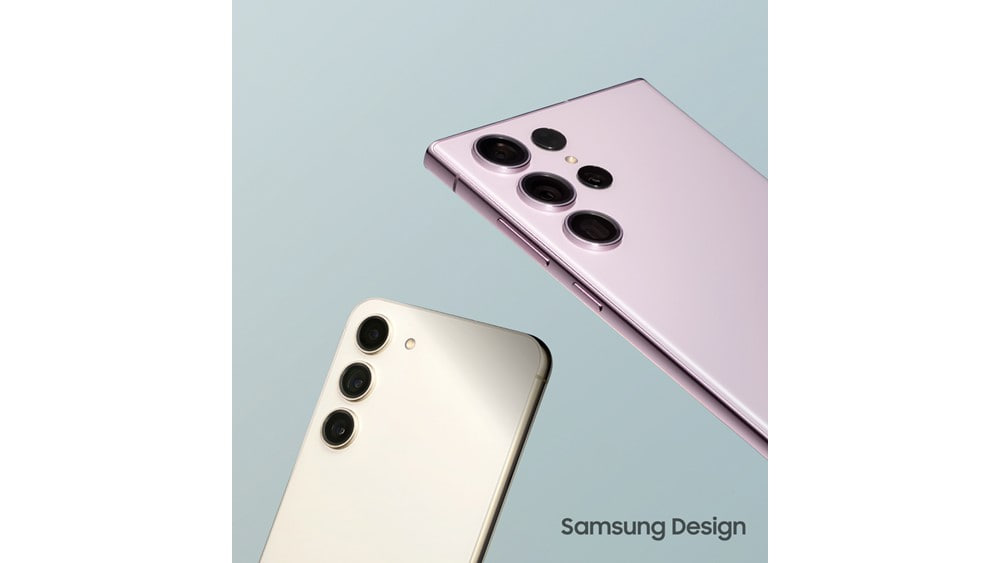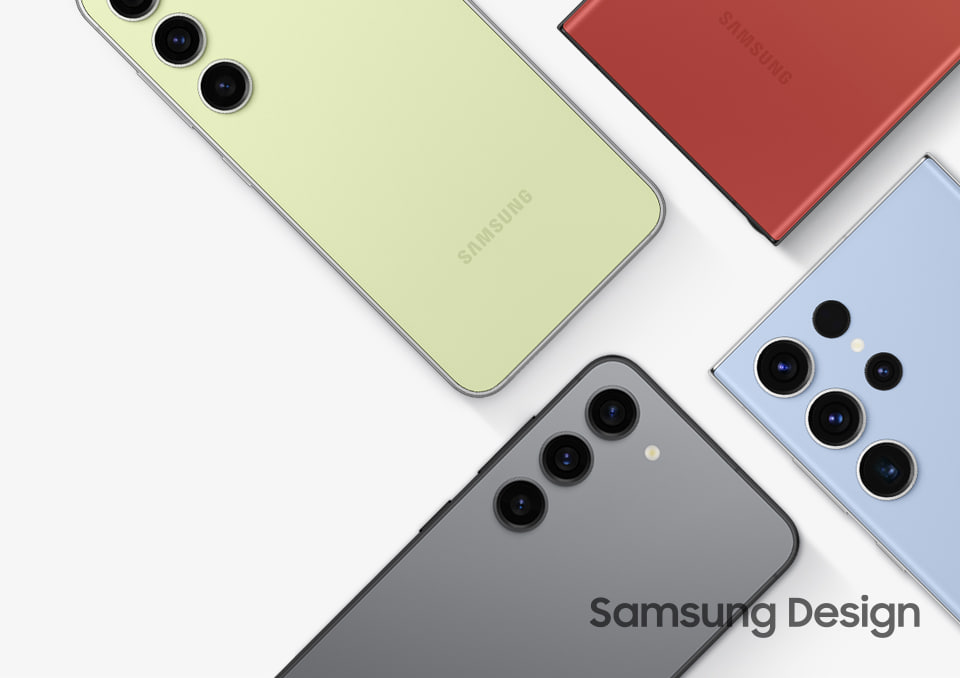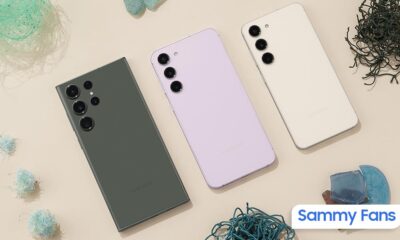News
Samsung Galaxy S23 series creators reveal design story

Launched back on February 1st, the Samsung Galaxy S23, Galaxy S23 Plus, and Galaxy S23 Ultra offer a premium smartphone experience to consumers. Recently, Samsung Newsroom talked to the creators of the Galaxy S23 series to get to know the design story.
Here’s how the Samsung Galaxy S23 series’ distinct design came about:
Design theme – “Create the Essentials”
If too many unnecessary details are incorporated, resources can be wasted during the production process, so Samsung Galaxy S23 creators decided to retain only the bare essential design features, based on the true identity of the device.
The Samsung Galaxy S series is a product lineup built on the true essence of what premium design can be. For the Galaxy S23 series, we deliberated extensively on what elements would not only make for a great design but also how they would impact the world at large.

Signature design
Vanilla and Plus Galaxy S23 variants introduce thin bezels that are slim and balanced on all sides for users to better focus on their screens, while a curved metal frame both protects the screen and provides the user with a comfortable grip.
Adding to this, the camera contour cut design seen on the last year’s Galaxy S22 and S22+ was removed, and all three models of the Galaxy S23 series are now equipped with a single camera design to deliver even more consistency across the lineup.
The Galaxy S23 Ultra brings reduced side edges and extended flat surfaces even further. It not only provides a better grip but also provides more space in which the S Pen can be utilized and ultimately maximize the benefits of the large screen.

Camera’s distinct design
Samsung believes the camera design of a device has become a powerful way to distinguish a product and express brand identity. The Galaxy S23 series camera layout has stayed the same since the Galaxy S21 series in order to foster a unique design identity.
Meanwhile, the external part of the camera is a glossy metal while the internal parts have been processed with smooth hairlines to convey the camera’s powerful performance. The design of the inner elements, including the form, texture, and color, is inspired by traditional camera lenses.

Colors are inspired by nature
The Galaxy S23 series comes in four colors that are based on a concept Samsung calls “Shades of Nature”. The Green shade is reminiscent of a tranquil forest while Phantom Black embodies the silent strength of nature, and the bright Cream shade is warming to look at while Lavender captures the energetic nature of everyday life.

Besides, the company developed four additional colors under the concept of “Shades in Dream”. Exclusively available on Samsung.com, the Lime, Skyblue, Red, and Graphite provide online customers with some upbeat and futuristic shades.
You can read the entire design story at Samsung Newsroom.
News
Here’s why Google Messages replaced Samsung Messages on Galaxy devices

Samsung’s latest foldable phones come with Google Messages by default. The company has now revealed the reason behind this move on Galaxy devices. Samsung says Google Messages replaced Messages to foster RCS adoption.
According to AndroidAuthority, a source explained Samsung’s decision to switch to Google Messages as the default messaging app. The recently released Galaxy Z Flip 6 and Z Fold 6 come with Google Messages with RCS enabled by default.
Looks like promoting Google Messages on Galaxy devices will boost RCS adoption. Samsung Messages isn’t already installed on newer phones. However, one’s stopping you from getting it on your Galaxy from the Galaxy Store.
While many apps support the RCS feature, Google Messages offer the best user experience. Making it a default messaging app is an effort to boost the adoption of RCS tech. Apple is also preparing to bring RCS chat functionality to iMessage for iPhones.
What Samsung source said:
- Even if messaging apps follow the RCS standard, the availability may be limited depending on which app the other party uses. That’s why we decided to make Google Messages the common messaging platform, allowing Galaxy users to communicate more freely. This also enables a messaging app to respond to changes of the RCS standard more quickly and efficiently.
Previously, Samsung devices launched in the US came with two messaging apps. This time, the company has removed the Samsung Messages. During the first setup, users are notified that Google Messages is the default messaging application.
News
Samsung SmartThings gets ISO 27001 certified

Samsung SmartThings gained the international standard ISO/IEC 27001:2022 certification. The company has officially announced this major development in its global connected living platform.
SmartThings received ISO/IEC 27001:2022 certification for information security management systems. Certification reiterates that the SmartThings Cloud operates per international standards.
To be certified, a company has to meet the standard across a total of 123 detailed items, including policies for information security, access control for information assets, and incident response.
SmartThings receiving the ISO 27001 certification is the result of our sustained focus on the protection of information in a hyper-connected world with exponentially increasing intelligence.
Seungbum Choi, Executive Vice President and Head of Device Platform Center at Samsung Electronics said “this is just another step in our drive to fortify the platform’s security. We will continue to find new ways to ensure that SmartThings’ personalized services are provided even more safely.”

BSI Prez says that they have recognized that the operation capability and security level of Samsung SmartThings is excellent. It will further boost trust in the SmartThings platform and strengthen business competitiveness.
ISO 27001 is the leading global standard for ISMSs and was established by the International Organization for Standardization. It provides companies with guidance to manage the risks to information assets systematically and achieve information protection goals.
News
Dr.diary fuels Samsung Health with glycated hemoglobin algorithm
Samsung Health app integrated the Dr.diary (Doctor Diary) glycated hemoglobin feature. The blood sugar management platform announced the launch of its glycated hemoglobin estimation functionality on Samsung’s Health application.
According to ETNews, Dr.diary announced the integration of a glycated hemoglobin level feature in Samsung Health. Galaxy users will now be able to check the estimated glycated hemoglobin level provided by Doctor Diary.
To activate the feature, Health app users will have to permit certain conditions of data in the Blood Sugar service. It is worth noting that glycated hemoglobin is a key figure for diabetes diagnosis, which users will find worth using in the Health app.
Established in 2017, Dr.diary is a blood sugar management platform. It analyzes and predicts the changes in glycated hemoglobin using its own algorithm. Earlier this year, the firm secured a patent for “glycated hemoglobin estimation based on blood sugar data table.”
Song Je-yoon, CEO of Doctor Diary, said, “With our predicted glycated hemoglobin level prediction algorithm being installed in Samsung Health, more people will be able to recognize their glycated hemoglobin level and manage their health more efficiently.”

Glycated hemoglobin (HbA1c) is a standardized numerical value of the percentage of hemoglobin, such as hemoglobin, which has been glycated by glucose. Glycated hemoglobin reflects the average blood sugar level over the past 2-3 months.
Samsung Health (with Wear OS Galaxy Watch) users can conveniently check their estimated glycated hemoglobin level within the app and use this information to manage their blood sugar levels through diet and exercise.










